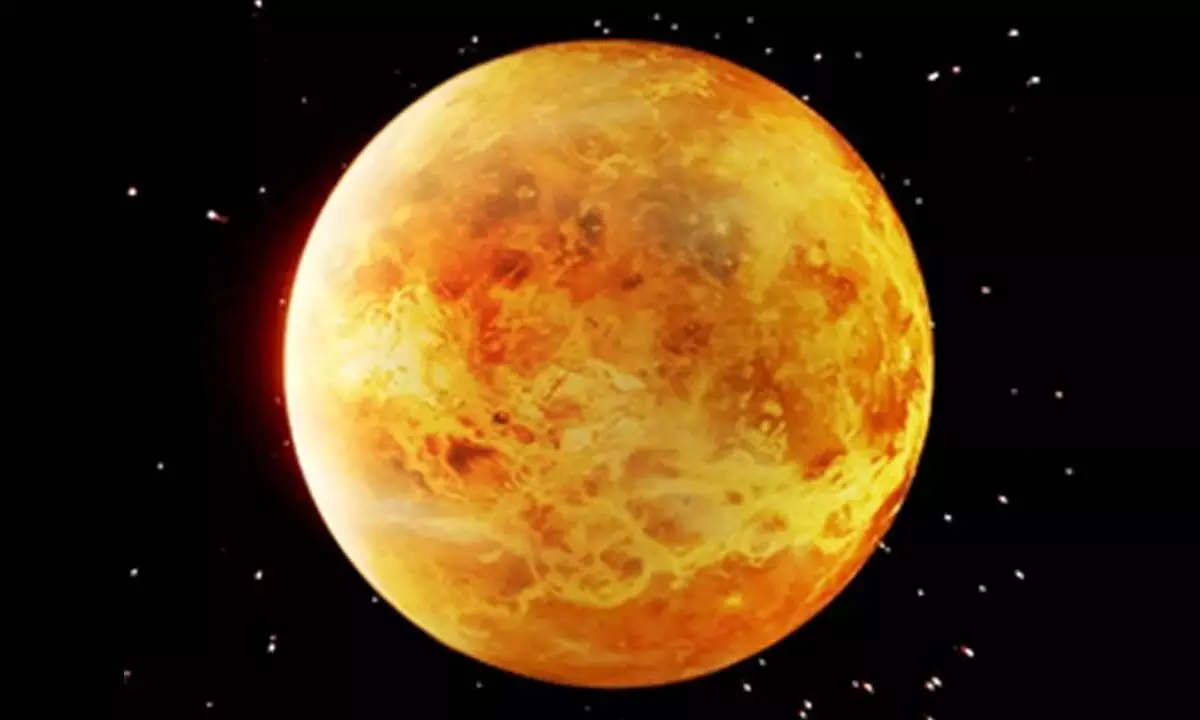Live
- They always want me to win, and now I feel lucky to have been offered a story like ‘Zebra’: Satyadev Kancharana
- ‘Democracy first, humanity first’: PM Modi in Guyana's parliament on two countries' similarities
- PKL Season 11: Telugu Titans register third straight win to top standings
- Is Pollution Contributing to Your COPD?
- NASA Unveils Underwater Robots for Exploring Jupiter's Moons
- Additional Central forces arrive in violence-hit Manipur
- AR Rahman and Saira Banu’s Divorce: Legal Insights into Common Issues in Bollywood Marriages
- 82.7 pc work completed in HPCL Rajasthan Refinery area: official
- Curfew relaxation extended in 5 Manipur districts on Friday
- Tab scam prompts Bengal govt to adopt caution over fund disbursement
Just In
Venus once had Earth-like plate tectonics, critical for life: Study

Venus, known as a scorching wasteland of a planet, may have once had tectonic plate movements similar to those believed to have occurred on early Earth, found a study indicating the possibility of hosting life.
New York: Venus, known as a scorching wasteland of a planet, may have once had tectonic plate movements similar to those believed to have occurred on early Earth, found a study indicating the possibility of hosting life.
Using atmospheric data from Venus and computer modelling, a team of scientists from Brown University showed that Venus must have had plate tectonics sometime after the planet formed, about 4.5 billion to 3.5 billion years ago.
This can account for the abundance of nitrogen and carbon dioxide present in Venus' atmosphere, they said, in the paper published in the journal Nature Astronomy.
The composition of the planet's current atmosphere and surface pressure would only have been possible as a result of an early form of plate tectonics -- a process critical to life that involves multiple continental plates pushing, pulling and sliding beneath one another.
On Earth, this process intensified over billions of years, forming new continents and mountains, and leading to chemical reactions that stabilised the planet's surface temperature, resulting in an environment more conducive to the development of life.
Venus, on the other hand, Earth's nearest neighbour and sister planet, went in the opposite direction and today has surface temperatures hot enough to melt lead.
One explanation is that the planet has always been thought to have what's known as a "stagnant lid," meaning its surface has only a single plate with minimal amounts of give, movement and gases being released into the atmosphere.
The team posts that this wasn't always the case. The paper suggests that this early tectonic movement, like on Earth, would have been limited in terms of the number of plates moving and in how much they shifted.
It also would have been happening on Earth and Venus simultaneously.
"One of the big picture takeaways is that we very likely had two planets at the same time in the same solar system operating in a plate tectonic regime -- the same mode of tectonics that allowed for the life that we see on Earth today," said lead author Matt Weller, who led the study while a postdoctoral researcher at Brown and is now at the Lunar and Planetary Institute in Houston.
This bolsters the possibility of microbial life on ancient Venus and shows that at one point the two planets -- which are in the same solar neighbourhood, are about the same size, and have the same mass, density and volume -- were more alike than previously thought before diverging.
The study also highlights the possibility that plate tectonics on planets might just come down to timing -- and therefore, so may life itself. "We've so far thought about tectonic state in terms of a binary: it's either true or it's false, and it's either true or false for the duration of the planet," said study co-author Alexander Evans, an assistant professor of Earth, environmental and planetary sciences at Brown.
"This shows that planets may transition in and out of different tectonic states and that this may actually be fairly common. Earth may be the outlier. This also means we might have planets that transition in and out of habitability rather than just being continuously habitable."
That concept will be important to consider as scientists look to understand nearby moons -- like Jupiter's Europa, which has shown proof of having Earth-like plate tectonics -- and distant exoplanets, the paper said.

© 2024 Hyderabad Media House Limited/The Hans India. All rights reserved. Powered by hocalwire.com






